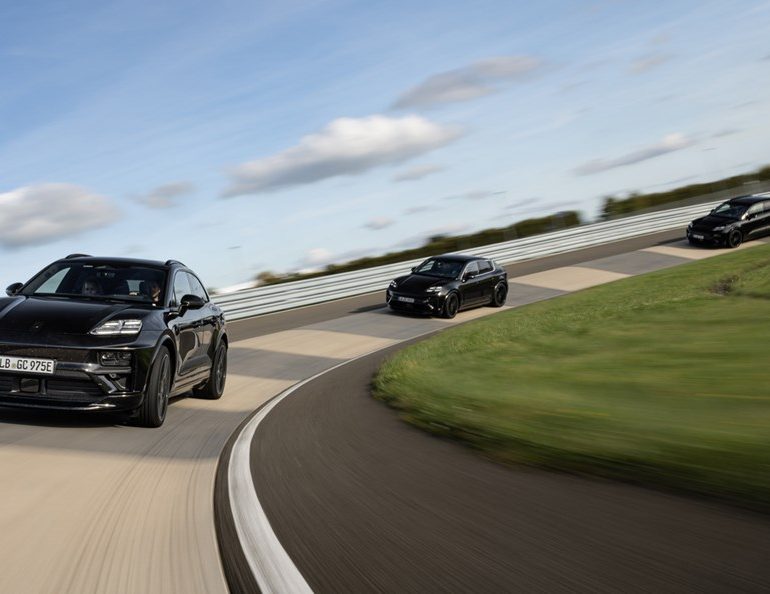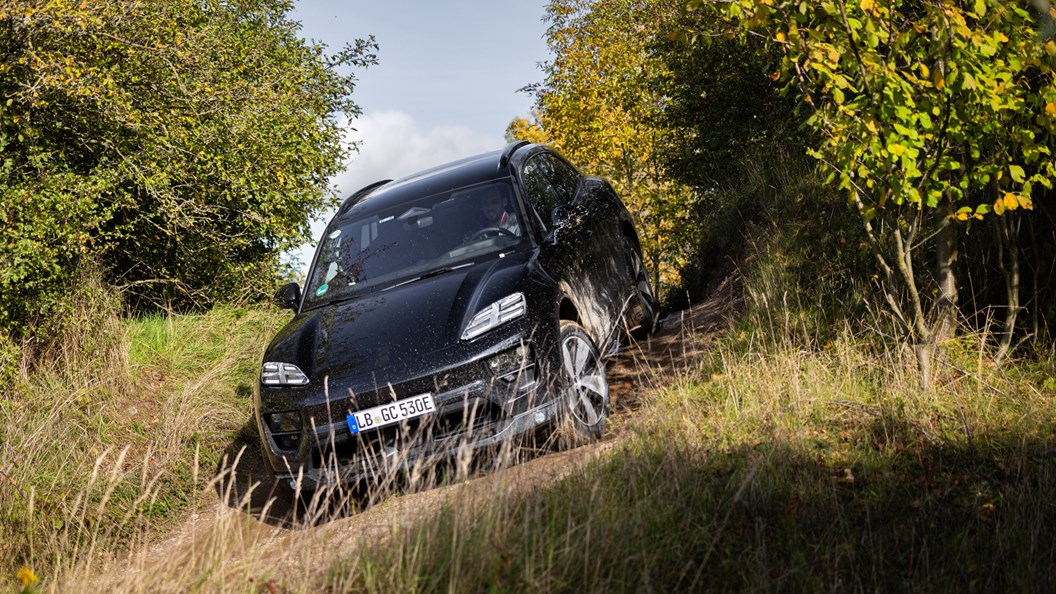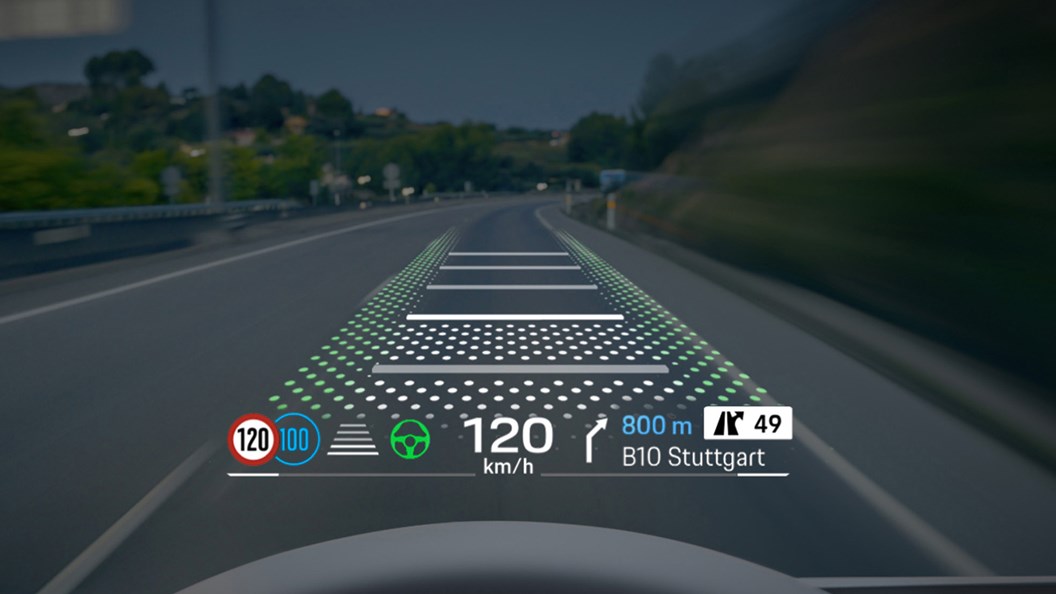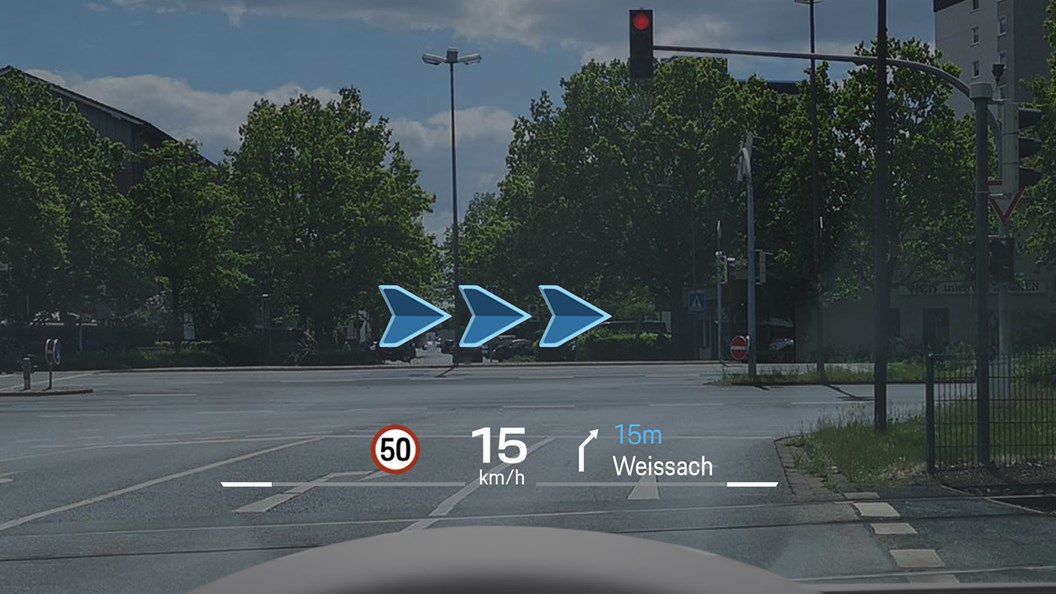It’s no secret that the Porsche Macan EV has been in the pipeline for quite some time, and it’s only logical that the brand’s best selling model over the past few years (by unit sales) will become the new face of the German automaker’s electric evolution. While the Taycan has been more a flex of Porsche’s electrification muscle, the Macan—via its more accessible price point and larger consumer base—will be a much more accurate indication of how well the company’s EV strategy will scale.
If the Macan is going to continue being Porsche’s chief breadwinner, then some things are going to need to remain familiar, even amidst all the EV transformation chaos. Most notably, that means that its compact SUV silhouette would need to stay intact, meaning the battery architecture would need to be built around its design, and not the other way around. Then, the Macan would have to maintain a price point which allows it to remain as the brand’s entry level offering (and gateway drug) .
On the face of it, that probably isn’t an easy thing to pull off—given the inherent premium associated with EV drivetrains at the moment—but Porsche has an excellent track record which proves that they can tackle these challenges with relative ease. Now, we’ve been given a clearer look into what Porsche’s vision for the future will look like as the company has begun prototype testing in plain sight, in the process revealing some clues on what things will look like inside and out.
It should be noted that combustion-engined Macans will continue to be sold alongside the EVs, which can only help hedge the bet on the latter’s success. However, Porsche intends to make the Macan EV its star player on the roster, and is providing the ICE versions only as a “behind the scenes” alternative for those who can’t be swayed into what will be aggressively marketed as the “better” option.
How Things Are Shaping Up
The Macan EV is slated to arrive in time for the 2024 model year and as part of the Macan’s overall design refresh, which encompasses the gas-powered versions as well. We’re told that the EV models will be the recipient of some distinctive design cues which will make it distinguishable from the aforementioned, while also providing the functional benefits which their fully-electric powertrains demand. As part of the VAG conglomerate, the Macan will also share the same underpinnings with the upcoming Audi A6 e-tron.
Porsche has long touted its own 800-volt architecture as being the basis upon which all their future electric vehicles would be built, and the Macan will be utilizing the very same. Of course, this doesn’t mean there haven’t been any improvements made in this department specifically for the Macan, with Porsche stating that customers can expect improved range figures versus the Taycan, and perhaps crucially, a 100 kWh battery design which is easier to access and perform repairs on. Sadly, there have been no significant advancements when it comes to charging—with the same 270 kW maximum intake and a 5% to 80% state-of-charge replenishment taking 22.5 minutes to complete—making the Macan EV no better than the Taycan in this regard.
Upon release, it looks as though Porsche will be using the old playbook, launching the all-wheel drive Macan EV with both a “standard” and “high-performance” variant before releasing additional and/or in-between trims over the following months. This suggests that we can expect an S (or 4S) and Turbo model to debut as the initial offerings for the Porsche Macan EV, with a GTS and Turbo S model waiting in the pipeline. What might be more questionable at this point is whether the Macan EV will follow the Taycan, and eventually offer a rear-wheel drive base model in an attempt to broaden the compact SUVs appeal—after all, “rear-wheel drive” and “SUV” isn’t something that typically goes together.
In Further Detail
Sources have suggested that the Macan Turbo EV will produce at least 603 hp and 738 lb-ft of torque, making it the fastest Macan ever produced despite its weight penalty caused by the electric- drivetrain. Base EV models will likely produce similar power figures to the current crop of GTS variants, which would put them somewhere in the mid-400 hp range, while a 4S equivalent would likely end up in the low 500’s.
Under regular driving conditions, the Macan EV’s rear e-motor will be providing 100% of the driving power, with the front e-motor coming into play during more spirited driving or when additional traction is required. The e-motor control system is also able to distribute front and rear torque instantly and in any permutation it deems optimal in the moment. Up to 250 kW can be recuperated under regenerative braking.
The new Porsche Macan EV will continue to utilize a multi-link front and rear suspension design, with a fixed steel spring setup and an air suspension system (PASM) coming standard on the entry-level models and Turbo models respectively. For the latter, this allows ride height adjustability based on the Macan EV’s different driving modes, allowing the car to be lowered up to 5.9″ in Sport+ mode and raised up to 8.7″ in Off-Road mode—the normal ride height benchmark is set at 7.1″.
For the first time on a Macan, rear-wheel steering will also be available (as standard on the Turbo models, and optional on the lower models). This system helps to improve the overall driving dynamics of the Macan EV, minimizing turning radiuses at lower speeds while improving stability at higher speeds. Macan EV’s equipped with this feature also have a front-steering rack which turns 15% quicker than the standard fare.
Relative to the previous-gen Macan, things will be quite transformative on the inside as well, though in doing so, will also become more uniform with other models in the Porsche line-up. That means the Macan EV will inherit the now-conventional Porsche infotainment system which features a 10.9″ center dashboard touchscreen and 12.6″ digital instrument cluster—as seen in the Taycan, the new Cayenne, the new Panamera and in part, the 992-gen 911. This provides a sort of “standardization“, if you will, such that you could hop into any brand new Porsche model and have an identical experience when it comes to interfacing with the car’s operating system.
More To Follow
No word yet on an exact release date for the Porsche Macan EV, nor are there any officially reported figures with regards to pricing. Some sources have estimated that the MSRP of the initial release “standard” Macan EV (i.e. the purported 4s model) will likely start in the $80,000 USD range, putting it in the middle of the price range between the current-gen Macan S ($72,300) and Macan GTS ($86,800). The Macan Turbo EV variant is expected to crest into $100,000 USD territory. Future base models would lower the price of entry to within the $70,000 range.
We’ll provide more details on Porsche’s latest (and only second) fully-electric vehicle as they become available. The Porsche Macan EV should be an automobile that both Porsche enthusiasts and zero-emissions aficionados alike can get excited about. It’s certainly shaping up to be a product that is going to fully deliver on the fronts of performance, utilitarianism and eco-friendliness—the trifecta required for a car to be commercially successful (and scalable) in the modern era.
Image Gallery







Video Gallery
















